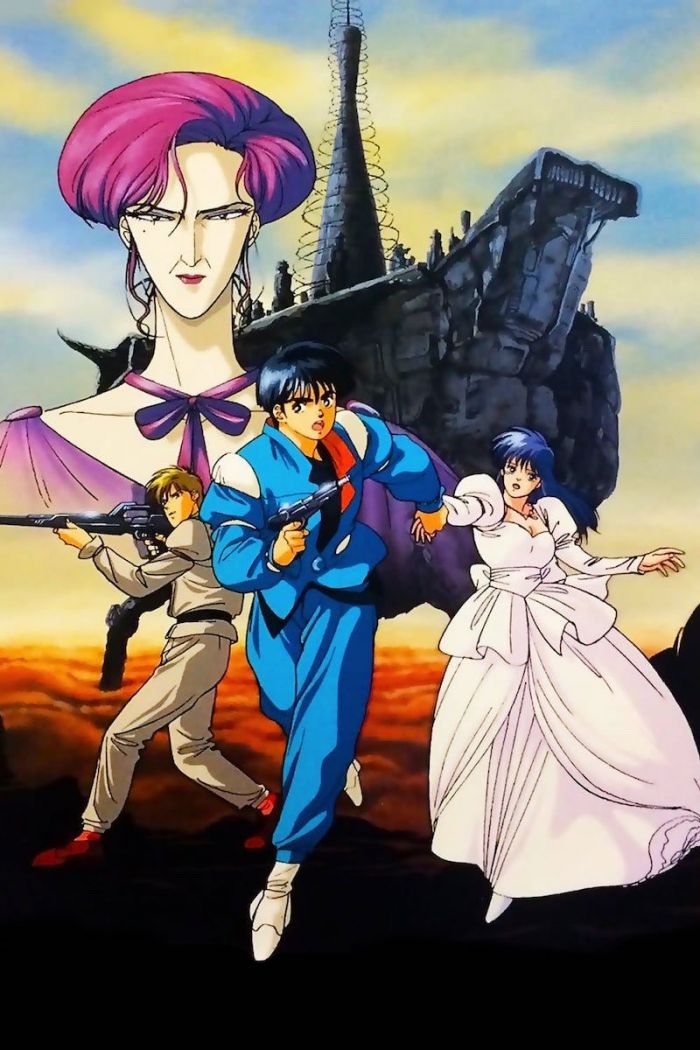Zillion: Burning Night by Mizuho Nishikubo (Review)

Earlier this month, Polygon’s Toussaint Egan wrote an article about the influence of Walter Hill’s 1984 cult classic Streets of Fire. Egan’s article mentions two classic anime titles, Megazone 23 and Bubblegum Crisis, both of which feature several direct references to Hill’s movie. However, because of its focus on specifically cyberpunk anime, Egan’s article overlooked another anime title that’s an unashamed Streets of Fire homage: Mizuho Nishikubo’s Zillion: Burning Night.
I suspect that Zillion: Burning Night is one of those ’80s sci-fi anime titles that many modern anime fans have never even heard of. But 1988, as it turns out, yielded a bumper crop of anime OVAs, with Appleseed, Demon City Shinjuku, Gunbuster, and Patlabor — to name a few — all coming out that year. Compared to those titles, it’s no surprise if Zillion: Burning Night rarely gets mentioned, much less recognized in the broader anime fandom.
But Zillion: Burning Night holds the distinction of being one of the first anime titles that I ever watched, alongside Black Magic M-66, Dirty Pair, M.D. Geist, and Project A-ko. As such, the OVA was burned into my subconscious as an important pop culture milestone, regardless of its actual merit or quality.
Zillion: Burning Night was a sequel to the original Zillion anime series, in which a group of plucky young soldiers defend the planet Maris from alien invaders with the help of the mysterious “Zillion” guns. (Not surprisingly, the gun-centric anime inspired two video games for the Sega Master System as well as its very own line of laser tag toys.) In Zillion: Burning Night, however, the aliens have been defeated. The soldiers are now in a rock bank called White Knights, who are all the rage thanks to their charismatic lead singer, Apple.
If you’ve seen Streets of Fire, then you know what to expect from the OVA’s opening minutes. White Knights are rocking out at the local bar, which is attacked by the vicious Odama clan. This opening sequence is full of energy and a lot of fun to watch, even if you don’t know that its entire presentation and vibe — and more than a few specific shots — are straight out of Streets of Fire. And if you are familiar with Streets of Fire, then I think that only adds to the fun.

The Odama clan kidnap Apple and take her back to their fortress, where she is to be married to the Odama heir. In pursuit are two of Apple’s bandmates, who possess the incredibly ’80s-tastic anime hero names of J.J. and Champ. Armed with the last remaining Zillion guns, the two heroes — who (surprise!) are in some sort of rivalry for Apple’s affections — make it to the Odama fortress, only to be confronted by a mysterious, whip-wielding stranger named Rick who has his own agenda concerning Apple.
What follows is exactly what you’d expect from an ’80s action OVA: lots of melodramatic dialog that serves only as filler between action sequences that get increasingly nonsensical and over-the-top, bizarre characters (especially those in the Odama clan, beginning with the overbearing matriarch who’s not above using a steam shovel to attack our heroes), and of course, a wee bit of fan service.
It’s all pretty dated now, some three decades after the OVA’s original release. But watching it again recently, I remember how exciting it seemed to high school me. It was a cartoon, sure, but unlike any cartoon that I’d ever seen up to that point. And while the dialog — which was dubbed, just like every other Streamline Pictures release — seemed corny even back then, I did get caught up in the plot, and especially the mystery surrounding Rick. Zillion: Burning Night is pretty silly, and the banter between J.J. and Champ juvenile, but it still felt more mature (for lack of a better term) than what I normally associated with animation. (And for the record, concerning the J.J./Champ rivalry, I was on Team Champ. J.J. was a total punk.)
If you don’t have any nostalgic attachments to Zillion: Burning Night like I do, then I’m not sure how much I can actually recommend it to you. And even if you were still inclined to check it out for historical purposes, there are other titles from the same era that are probably more deserving of your study (e.g., Gunbuster, Patlabor).
In the end, the only thing that Zillion: Burning Night really has going for it — aside from nostalgia, that is — are the musical numbers, specifically the aforementioned opening number and “Sayonara No Matchikado,” which ends the OVA on a soulful note. Both of these songs, which were performed by Risa Yuuki, contain the OVA’s best, most stylish animation. (Here’s a little bit of anime trivia: Zillion: Burning Night was one of the first titles by what would eventually become Production I.G, one of the most respected anime studios working today.)
Well those, and the Streets of Fire-isms, which are fun in their own way.

I don’t regret seeking out Zillion: Burning Night again after all this time, not as much as I regretted seeking out Black Magic M-66, anyway. But your mileage will definitely vary if, say, you didn’t first watch it on VHS back in high school. If it weren’t for nostalgia, then I suspect I would’ve been tempted to fast forward through much of Zillion: Burning Night — and it’s only 45 minutes long to begin with.